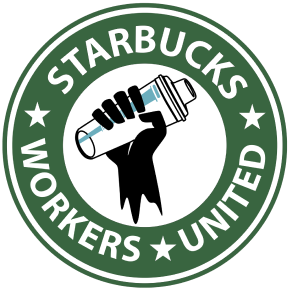Defusing the word “socialism” from American political discourse is not an easy feat. For almost 150 years, the ruling class and mainstream media have fed the American working class a myth about what socialism is. This article will attempt to explain what socialism has to offer the American working class, which lives under an exploitative and fragile capitalist system, as well as the lengths the US ruling class will go to demonize socialism.
Defining Socialism
Socialism is the collective, democratic, public ownership of the means of production (e.g. factories, plants, tools, etc.) amongst the working class.
In Marxist terms, the proletariat, or the working class, are those who don’t own tools, capital, or equipment and thus, in order to make a living, are forced to trade their ability to work. In the book “Blackshirts and Reds,” leftist author Michael Parenti chronicles this social process of proletarianization:
“In 1820 about 75 percent of Americans worked for themselves on farms or in small businesses and artisan crafts. By 1940 that number had dropped to 21.6 percent. Today, less than 10 percent of the labor force is self-employed.”
Bosses pay workers less than the value they create. The difference, or “surplus value,” created by the worker’s labor is taken by the boss in the form of profit.
Capitalists’ ultimate commitments are to capital accumulation and profit margins. Even when there is demand in the market, the capitalist class is only concerned with maximizing profits regardless of the cost. In their endless pursuit of profit, corporations will downsize their workforce and further exploit the remaining workers to increase productivity and reduce their labor costs.
Socialism’s Origins in America
Socialism largely developed in central Europe in the writings of Friedrich Engels and Karl Marx and in France during the Paris Commune of 1871. In the United States, it was not until the turn of the 20th century when socialism became a popular political movement.
Just before the Great Railroad Strike of 1877, robber barons ruthlessly exploited vulnerable workers and monopolized industries. The first nationally organized socialist party, the Workingmen’s Party of the United States, later the Socialist Labor Party of America (SLP), attempted to convert labor institutions like the American Federation of Labor into militant, working-class movements. The SLP additionally ran the first socialist presidential campaign in 1892, though unsuccessfully.
European immigrants, often Jewish and German, made up much of the early socialist movement in the United States. Many had either participated in or grew up in the aftermath of the 1848 revolutions and subsequent socialist movements in central Europe. For instance, in the midwestern United States, by the 1890s, hundreds of thousands of German immigrants settled in cities like Chicago, the second-largest city in the United States. Chicago would subsequently be the epicenter of the Eight-Hour Day movement and a hub for anarchist and socialist organizing.
By 1905, labor activists from several labor organizations and leftist political parties such as the Knights of Labor and Socialist Party came together to form the International Workers of the World (IWW). Eugene V. Debs, a founding member of the IWW and former railroad union leader, became a leading socialist voice in the United States. He would run on the Socialist ticket in 1904, 1908, and 1912. In his 1912 run for office, one-sixth of Oklahoma voters cast their ballot for Eugene Debs on a Socialist Party (SP) ticket.
The First Red Scare: The 1890s
Strikes by industrial workers became increasingly common and militant in the United States in the 1880s, a time when working conditions were inhumane and wages were abysmally low. The American labor movement included a radical wing of socialists, communists, and anarchists who believed the capitalist system could not be reformed and should instead be dismantled.
Prominent anarcho-communists such as Albert and Lucy Parsons, August Spies, and Samuel Fielden, rallied workers to participate in a general strike to enact an eight-hour workday. Albert Parsons, in addition to organizing workers, led an eight-hour workday rally hosted by the Central Labor Union.
By May 1, 1886, several hundred thousand workers marched through the streets, effectively shutting down the city. More than 350,000 workers across the nation walked off their jobs to participate in the mass general strike. Lucy and Albert played a significant role in leading workers through the streets chanting and singing.
In the aftermath of the general strike, radical activists rallied 2,000 workers in Haymarket Square to protest the killing of four striking workers by police at the McCormick Harvest Works in Chicago.
As many as 176 Chicago police officers, in defiance of the mayor’s orders to allow the peaceable meeting to continue, marched into the crowd and ordered the attendees to disperse. An unknown person hurled a bomb into the ranks of the police, which exploded, killing one officer and injuring several others who later died of their wounds. The police promptly pulled their revolvers and fired indiscriminately into the crowd, injuring 50 bystanders.
Rumors soon spread that socialists destroyed city hall. Daily papers, without evidence, blamed anarchists for throwing the bomb and charged leftist leaders August Spies, Sam Fielden, and Albert Parsons as the ringleaders of the bombing and riot. The labor and immigrant communities, particularly Germans, additionally came under suspicion, and widespread police raids were carried out on the homes and offices of suspected anarchists.
A grand jury found that the attack on the police was the result of a conspiracy. Eight anarchists were tried together despite having varied degrees of connection to the event. Only three of them had actually been at the Haymarket rally. Seven of the anarchists were sentenced to death.
The Second Red Scare: The 1910s and 1920s
In 1917, the Bolsheviks led by Vladimir Lenin embarked on the October Revolution to overthrow the oppressive Tsarist regime, bring an end to Russia’s participation in the First World War, and install a council republic led by the working class to seize the means of production. Already rattled by worker revolts like the Great Railroad Strike of 1877 and the Eight-Hour Day movement in the United States, the prospect of a successful worker-led revolution terrified America’s ruling class. This fear led the United States, alongside the British, French, and Japanese Empires, to invade Russia in 1918 in an attempt to crush the revolution during the Russian Civil War (1917–1923).
Their attempts to intervene failed, and the Soviet Union was soon established as one of the first socialist planned economies. Fearing similar socialist revolutions in central Europe, namely Germany, which itself had a developed socialist movement, capitalist powers across the globe hunkered down and sought to maintain the status quo, often violently and with the help of far-right reactionaries. In the United States, this manifested itself in the bourgeois
led second Red Scare.
By 1917, the United States officially entered the First World War despite Woodrow Wilson’s promise to keep the US out of it. Understanding the senseless and brutal nature of the war, which was primarily fought by imperial powers trying to expand empires, leftists were at the forefront of the American anti-war movement.
Two months after the United States entered the First World War, Congress enacted the Espionage Act of 1917, later the Sedition Act of 1918. The Espionage Act prohibited obtaining or disseminating information relating to national defense with the intent that the information may be used for the “injury” of the United States or to the advantage of any foreign nation. The Sedition Act expanded those offenses to include speech and expressed opinions that openly criticized the government or the war effort.
Eugene V. Debs, like many leftists of the era, opposed the First World War at its onset, arguing in a famous anti-war speech that Wall Street bankers, much like feudal lords, declare war with ease to enlarge their empire, their power, and their wealth at the expense of the working class who do almost all of the fighting and dying.
Debs also called attention to the growing nationalism and jingoism that arose amongst the American ruling class following America’s entry into the conflict:
“These are the gentry who are today wrapped up in the American flag, who shout their claim from the housetops that they are the only patriots, and who have their magnifying glasses in hand, scanning the country for evidence of disloyalty, eager to apply the brand of treason to the men who dare to even whisper their opposition to Junker rule in the United States… they would have you believe that the Socialist Party consists in the main of dis loyalists and traitors”
He was arrested and convicted in federal court in Cleveland, Ohio under the espionage law for this speech. He remained in prison for the entirety of the war, serving a 10-year sentence. He would run for president once again, this time from within prison, and received 1 million votes on a Socialist Party ticket in 1920.
On February 6, 1919, around 100 unions associated with the American Federation of Labor, in Seattle, representing 315,000 workers, voted to walk out in a gesture of support and solidarity with shipyard workers already on strike, ceasing all economic activity in the city.
Despite their initial success reaching headlines worldwide, American media outlets took a firm stance in opposition to the Seattle general strike as the second wave of red scare paranoia plagued the United States. Most of the local and national press promptly denounced the general strike, implying that the collective action was a prelude to a “Bolshevik revolution,” while conservatives similarly condemned the strike as a “revolutionary plot.”
On February 9, the strike came to an end following fatigue, failed negotiations, and two raids on the local IWW hall and Socialist Party headquarters by federal agents. Police officers and agents additionally closed the Union Record, a worker-owned daily newspaper, and arrested several of its staff as well.
On May 31, 1921, Nicola Sacco and Bartolomeo Vanzetti, two leftist Italian immigrants were arrested, tried, and executed for murders during an alleged robbery at a shoe factory in Braintree, Mass. The conventional wisdom held amongst leftist organizations was that the defendants had been convicted for their radical anarchist beliefs rather than for the crime for which they had been tried. The case came to represent the anti-immigrant and anti-leftist sentiments inflamed and propagated by the ruling class, two more casualties in an era of paranoia and capitalist repression.
The Third Red Scare: 1945–1991
The aftermath of the Second World War saw some of the largest geopolitical transformations in world history. Between 1946 and 1967, former colonies throughout the global south achieved political independence from Western European powers. At the same time, two primary superpowers, now political advisories, rose out of the ashes of the devastation of the Second World War: an industrialized socialist planned economy on one side under the Soviet Union and a reformist Keynesian capitalist economy on the other in the United States.
The third and most pervasive Red Scare emerged in the Cold War era. Confronted with the prospect of nations once again undergoing socialist revolutions across the globe, such as Greece in 1946 and Vietnam in 1954, the United States adopted a containment policy against communism, domestic, and abroad.
While Harry Truman implemented the Truman Doctrine to subvert socialist revolutions and liberation movements abroad, fears of an internal “fifth column” emerged at home. The House Un-American Activities Committee was promptly established by Congress to root out those suspected to be foreign spies, which really meant any member of the Communist Party USA (CPUSA) or “sympathizers” who refused to assist in committee investigations despite how flimsy many claims of espionage were.
Years earlier, in the aftermath of the Great Depression, the stock market collapsed as prices inevitably declined and panic ensued. As a result, many labor activists joined CPUSA. Although some had left the party by the time the early Cold War period had begun, their previous membership in the party was enough to question their loyalty to the nation. Sen. Joseph McCarthy spearheaded the fear-mongering campaign, claiming to have the names of hundreds of supposed communist sympathizers embedded in the US government.
In Hollywood, actors, screenwriters, directors, musicians, and other American entertainment professionals were blacklisted by studios for their membership in CPUSA or their reluctance to testify against their peers. Ten screenwriters, Alvah Bessie; Herbert Biberman; Lester Cole; Edward Dmytryk; Ring Lardner, Jr.; John Howard Lawson; Albert Maltz; Samuel Ornitz; Adrian Scott; and Dalton Trumbo famously refused to testify and were subsequently known as the blacklisted Hollywood Ten.
In the aftermath of a major strike wave in 1945 and 1946 involving over 5 million workers, and the increased paranoia of internal leftist threats, the Taft–Hartley Act of 1947 was introduced. Also known as the Labor Management Relations Act of 1947, the legislation crushed the power of unions. The law barred collective bargaining within industries, empowered the president to end a strike if work stoppages were deemed “detrimental to public welfare” (the “public” in this case being wealthy oligarchs), and banned solidarity strikes and wildcat strikes across industries.
Though it was enacted by a Republican-controlled congress, the law received significant support from congressional Democrats to protect the interests of the capitalist class. In a joint effort from both parties, communist members of the AFL-CIO were ousted and union leaders were required by law to take loyalty oaths assuring that they were not members of the Communist Party.
The Fourth Red Scare: 2008–present
The legacy of red scares have influenced and tainted contemporary politics to the extent that right-wing politicians use “socialism” as a euphemism to denounce every reform policy they don’t like.
Despite bailing out Wall Street bankers in the aftermath of the 2008 financial recession and increasing the use of drone strikes in the middle east, Barack Obama, throughout his presidency, was consistently accused of being a “socialist” by conservatives for advocating for Obamacare. In an embarrassing tweet, Republican Sen. Marco Rubio claimed that Biden’s $3.5 trillion infrastructure bill was “Marxism.”
This severe lack of understanding as to what is and is not socialism ultimately serves the ruling class and undermines the efforts and power of the working class. With each new red scare, distorting the definition of socialism, and smearing its proponents, the capitalist class keeps the working class misinformed, disorganized, and divided against itself.
Here is what socialism would actually mean: a system not built off of profit incentives but rather collective and democratic ownership of workplaces with governing councils, made up of workers, democratically dictating production and policy. If one wants to understand what worker ownership of the means of production looks like in a modern context, look no further than the efforts of French energy workers amidst the current pension strike. From electricians to engineers, French workers have been diverting and supplying power to working-class neighborhoods free of charge demonstrating the potential of the working class to collectively govern the distribution of resources.
The deliberate and insidious weaponization of red scares by the capitalist ruling class was acknowledged by Harry S. Truman himself in 1952:
“Socialism is a scare word they have hurled at every advance the people have made in the last 20 years. Socialism is what they called public power. Socialism is what they called social security. Socialism is what they called farm price support. Socialism is what they called bank deposit insurance. Socialism is what they called the growth of free and independent labor organizations. Socialism is their name for almost anything that helps all the people.”




